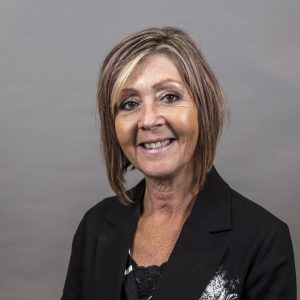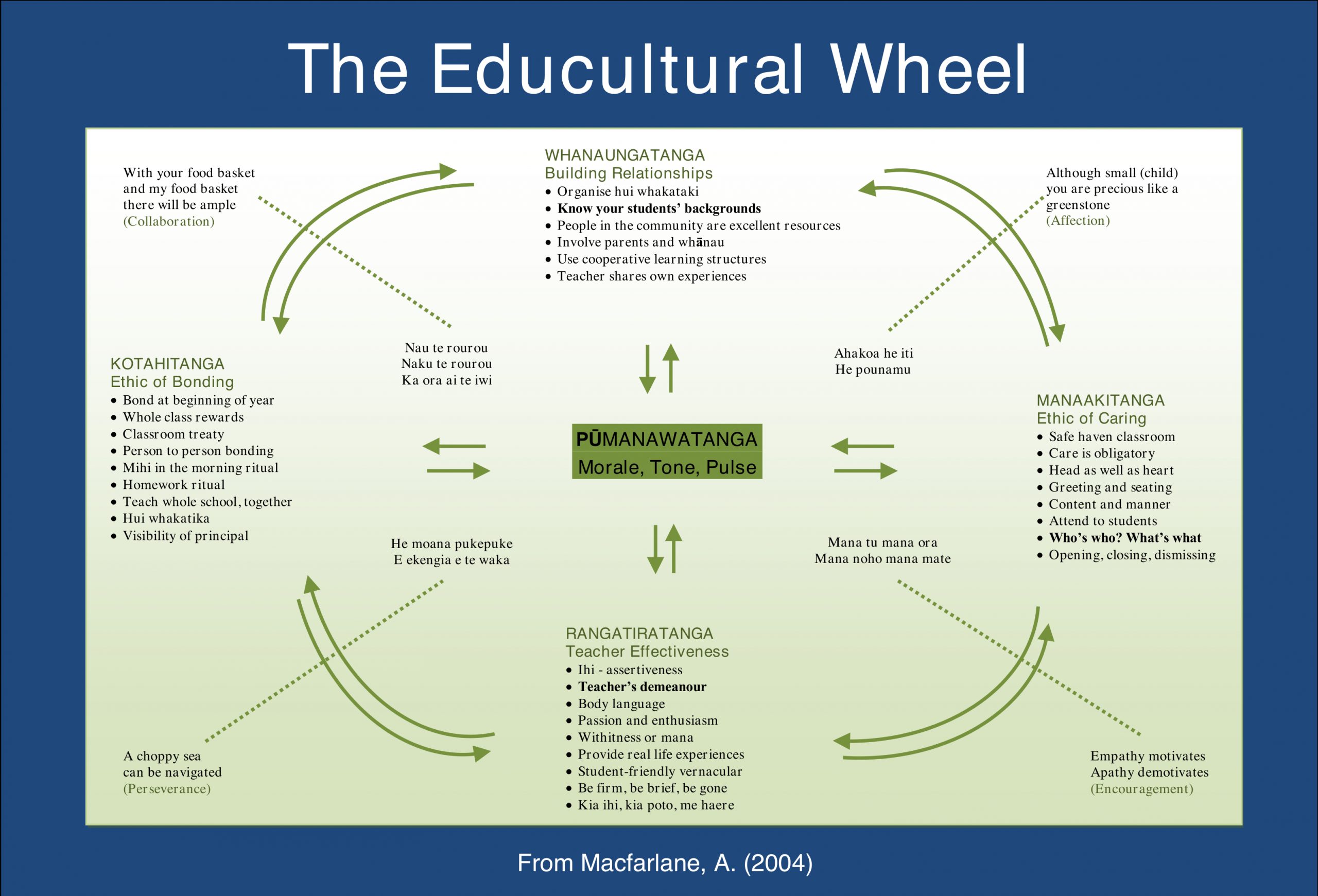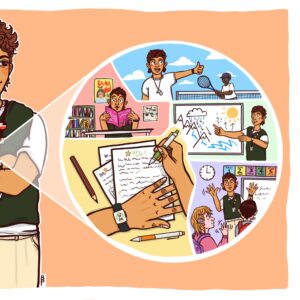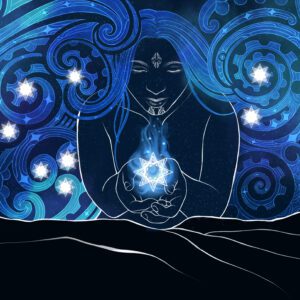



Global Citizenship education (GCED) is UNESCO’s response to the impact of poverty, global warming, inequality and human rights violations which threaten peace and sustainability worldwide. The goal of GCED is to empower learners of all ages to appreciate that these are serious issues and to advocate – both locally and globally – for safer, more wholesome, accepting, inclusive and sustainable societies that support everyone’s hauora. As leaders in our communities, this is an issue of importance to education professionals. I argue in this opinion piece however, that before exploring the “how” of GCED, it is necessary to define what “global citizenship” might mean more broadly, from a uniquely Indigenous Māori position.
Māori, as the tangata whenua of Aotearoa New Zealand, have always expressed kinship with nature through whakapapa (genealogy) and pepeha (narratives), which connect them to their tūrangawaewe (the place where one has the right of residence and the right to stand through whakapapa within one’s own tribal boundary). Through creation stories outlining how the world came to be, our tūpuna (ancestors) have ventured, in both metaphor and thought, beyond the shores of Aotearoa by talking about te ao (the world), and in doing so, have acknowledged Ranginui (Sky Father) and Papatūānuku (Earth Mother) for many hundreds of years. Whakataukī (proverbs) have continued to heighten the importance of paying homage to te taiao (the natural world), and to respecting te tāngata (people).
For the former (te taiao), creating a safe and sustainable environment that nourishes te tāngata is manifested by way of kinship ties through whakapapa to tūrangawaewae, and the cultural obligations of taking care of awa (rivers), moana (ocean), ngāhere (forests) and whenua (land). Te reo Māori (the Māori language) acknowledges kinship with nature even further through the use of the word “whenua”, which – as well as meaning “land” – also translates as “placenta”, both of which are sources of nourishment for sustaining life for all living things. For the latter (te tāngata), cultural constructs like tika (being just and fair), pono (being genuine and sincere), and aroha (being kind and compassionate) are deemed central to guiding interactions with and between people so as to achieve an inclusive and accepting society.
Other cultural concepts like tapu (unsafe; restricted) and noa (safe; unrestricted) serve to protect both environments and people in times of discord and anxiety, wherein ceremony is enacted to restore balance and status. A traditional approach to responding to disharmony and conflict, known as hui whakatika (a meeting to put things right) continues to provide supportive and culturally grounded spaces for reaching consensus, reconciliation, resolution, and ultimately restoring harmony (Hooper, Winslade, Drewery, Monk & Macfarlane, 1999).
As Indigenous people, Māori will be both the tangata whenua of Aotearoa New Zealand and manuhiri (a visitor) whenever working, living or travelling, in another location globally. Similarly, Māori are also able to be both tangata whenua and manuhiri within Aotearoa, whenever they step beyond their own tribal location. It is therefore argued that Māori – and indeed all Indigenous peoples globally – are unique in that they are able to adopt a distinctive position in terms of having both their first nations status (tangata whenuatanga) and their rights and obligations as global citizens. The experience of being both Indigenous people and global citizens gives Māori a unique perspective on how we should behave as global citizens. Global citizenship is a universal and shared responsibility, however it needs to come with caveats.
What this means for Global Citizenship education (GCED) is that it is not appropriate to seek solutions to the impact of poverty, climate change, inequality and human rights violations which threaten sustainability and peace worldwide solely from a Western approach. There are lessons to be learned from Indigenous perspectives of “authority” and “place” for all people, and especially for education professionals.
In 2001, Sir Mason Durie championed three goals for the educational advancement of Māori: To live as Māori; To actively participate as citizens of the world; To enjoy good health and a high standard of living. As Durie rightfully points out in the second goal, it is clear that we are all “citizens of the globe”, however in order to be responsive “global citizens”, we must acknowledge and adhere to particular protocols specific to “belonging to place”.
As manuhiri in another global location – much like being a visitor in someone else’s home – we must never assume that we have the authority to move in, take over, and start rearranging their furniture. Being a responsive global citizen should not infer unfettered access to, and authority over, others’ global locations, but instead requires people to acknowledge the guardianship and jurisdiction rights of the Indigenous first nations people of that place. GCED must therefore draw from the above imperatives to ensure that the notion of tino rangatiratanga (self-determination) pervades for all Indigenous people within their own global localities. Finding ways to honour and educate learners about Indigenous tino rangatiratanga in the classroom and staffroom is a way for education professions to themselves be responsive “global citizens” (Jackson, 1992; Durie, 1996; Penetito, 2010).

To that end, Macfarlane’s (2004) Educultural Wheel – a framework that supports culturally responsive teaching pedagogy for educators working with learners in Aotearoa New Zealand – has been adapted and offered as a structure for enhancing and informing GCED. Four core Māori worldview values work together to promote a sustainable and healthy outcome at its core:Whanaungatanga, Rangatiratanga, Kotahitanga and Manaakitanga (refer Ministry of Education, 2015).
The central outcome, Mauri ora – which literally translates as “flourishing” – sits at the heart of what CGED is striving to achieve; a sustainable, safe and healthy society that nourishes the hauora of all citizens. Given that our world is in the midst of a Covid-19 pandemic, this goal has never been more timely or urgent.
More on the Educultural Wheel can be found here.
Sonja Macfarlane is Pouhikiahurea (Practice & Implementation Advisor; Māori focus) for the Ministry of Education and Adjunct Associate Professor at University of Canterbury. Sonja would like to acknowledge NZCER Press and UNESCO for the opportunity to present and write on this topic in 2019, and for their permission to draw on content from these earlier publications.
References:
Durie, E. T. (1996). Will the Settlers Settle? Cultural Conciliation and Law. Otago Law Review, 8(3), 449-462.
Durie, M. (2001). A framework for considering Māori educational advancement. Paper presented at the Hui Taumata (1), Turangi and Taupo, NZ.
Hooper, S., Winslade, J., Drewery, W., Monk, G., & Macfarlane, A. (1999, July). School and family group conferences: Te Hui Whakatika (a time for making amends). Paper presented at Keeping Young People in School Summit Conference on Truancy, Suspensions and Effective Alternatives, Auckland, NZ.
Jackson, M. (1992). The Treaty and the world: The colonisation of Māori philosophy. In G. Oddie, & R. Perett (Eds.), Justice, Ethics and New Zealand Society, (pp. 1-10), Auckland, NZ: Oxford University Press.
Macfarlane, A. (2004). Kia hiwa rā! Listen to culture: Māori students’ plea to educators. Wellington, NZ: NZCER Press.
Macfarlane, S. (2019). He raraunga o te ao – Global citizenship: A Māori perspective. Curriculum Matters, 15, 99-103. https://eric.ed.gov/?id=EJ1244063
Ministry of Education. (2015). Working Together: Inclusive Practice in the curriculum. Wellington, NZ: Ministry of Education.
Penetito, W. (2010). What’s Māori about Māori education? The Struggle for meaningful context. Wellington, NZ: Victoria University Press.
Related Posts

At Arakura School in Wainuiomata, Lower Hutt, lunchtime isn’t just about food – it’s about community, connection and learning. Instead of outsourcing school lunches, staff and tamariki grow, prepare and serve nutritious kai together. The entire school gathers each day to share a meal, turning lunchtime into a rich learning experience.

In schools and centres across Aotearoa, a growing number of kaiako and support staff are sharing with colleagues that they have a neurodivergent diagnosis. In doing so, they’re helping to break down prejudices and promote inclusion. AKO spoke with three members of NZEI Te Riu Roa about their experiences as educators with ADHD.

Bush school, cold dips, and local conservation projects with rats traps, Half Moon Bay School on Rakiura/Stewart Island make sure all the opportunities are possible for their tamariki.

As the Matariki and Puanga stars rise again in our winter skies, Ako asked members what Matariki means to them, how they celebrate it and how it supports their wairuatanga. Here’s what they told us.